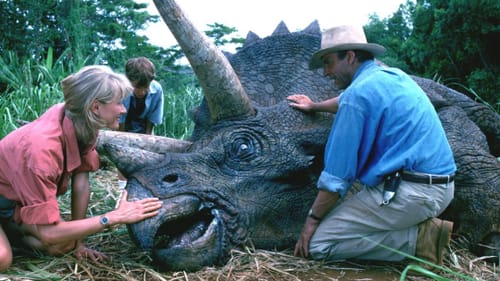Stay in the Loop
BSR publishes on a weekly schedule, with an email newsletter every Wednesday and Thursday morning. There’s no paywall, and subscribing is always free.
Cartoonized: A rant on the digital age
There's more to movies than special effects

Is there such a thing as visual effects looking too good — almost to the point of looking more fake than real? With today’s technology, we can see every mole and wrinkle on an actor’s face and every tumbling brick and puff of smoke from a city’s destruction.
Special effects in the movies started out as a form of parlor trick using hand-built models, but today, moviegoers gawk at multimillion-dollar CGI effects. The digital age provides innovative techniques, incomprehensible speed, and crystal-clear images into all media. Today, we can access pretty much whatever we want at the click of a mouse. Sure, it may not be as simple as a click, but our technical advancements allow us to make any vision come to life.
Today, actors are lit perfectly regardless of circumstance — surely a boon to the cinematographer — but the action scenes are insane. With so much going on, even on a giant (Imax, 3-D) movie screen, your eyes can’t keep up. Every inch of the screen is taken up with such detailed and intricate elements that it is impossible for your eyes to focus on something. Our visual effects bring us far past anything we could have dreamed of, but have we gone too far?
Balancing realism and magic
There is something about the way pyrotechnics were used in old movies. They weren’t exploited as they are today; they were used as devices to tell a story or awe an audience. Without the use of high-tech equipment or computers, directors and studios had to be resourceful and creative to wow their viewers. Innovations from the 19th century, such as the stop-motion technique or painting single frames of film to add color, were revolutionary, and they drew in audiences. Since the invention of the computer, though, things have changed: We as consumers are not as easily wowed. A movie has to have a certain balance of realism and magic.


For example, Jurassic Park (1993) looked more realistic than its sequel, Jurassic World (2015), even though the original was made over 20 years ago. What gives the original this appeal is the earthier portrayal of the environment — it all feels realistic, which makes the CGI moments seem more realistic than they look. Today, if you take these moments and try to outdo them in extraordinary situations, they appear silly and fake — they look like CGI.
Defaulting to the cartoony
Granted, you can’t make a superhero movie without the use of special effects, but they aren’t just used in action movies: Comedies and dramas rely heavily on the use of visual effects. Rather than filming on location, studios use green screens, and color tones, especially in comedies, are so sharp and bright that the effect is cartoonish.
For instance, within the last year, Dumb and Dumber To (a sequel) and Vacation (a remake) both look completely different from their source material, mainly because of the use of special effects, which were absent from the originals. The originals worked because larger-than-life characters were placed in real-world settings; the remakes put those same funny characters in outlandish, parodistic worlds, and it just didn’t work.
All sizzle, no steak
Are studios afraid to get their hands dirty? Is it quicker to “fix it in post,” or is it a way of providing a modern sheen to the visuals? Filmmakers should be spending more money filming on location and less time in post-production; they should use special effects as a seasoning, not a main ingredient. Going back to the basics of using puppets, hand-built set pieces, animatronics, and stop-motion animation is not primitive; it’s inventive and clever. The accessibility of digital effects is hurting the more important aspects of movies — the characters and the story.
Too many movies in recent years have failed by getting caught up in the visuals. The special effects are cool, but they alone cannot hold an audience. Studios need to discipline themselves, to act more like independent filmmakers and auteurs from the past. Late 19th-century French filmmaker Georges Méliès completed over 500 films in his lifetime; all were revolutionary in the use of special effects. He was known as a magician more than a filmmaker. He said, “To my great regret, the cheapest tricks have the greatest impact.” (By the way, Méliès was an important character in Martin Scorsese’s first 3-D film, Hugo [2011].)
Hollywood needs to relearn to use lower-tech, more creative ways to draw in audiences and tell stories. Just because we have the ability to use special effects technologies doesn’t mean we always should.
Sign up for our newsletter
All of the week's new articles, all in one place. Sign up for the free weekly BSR newsletters, and don't miss a conversation.